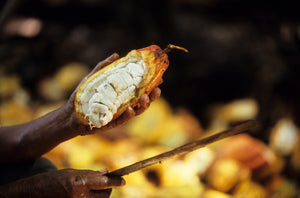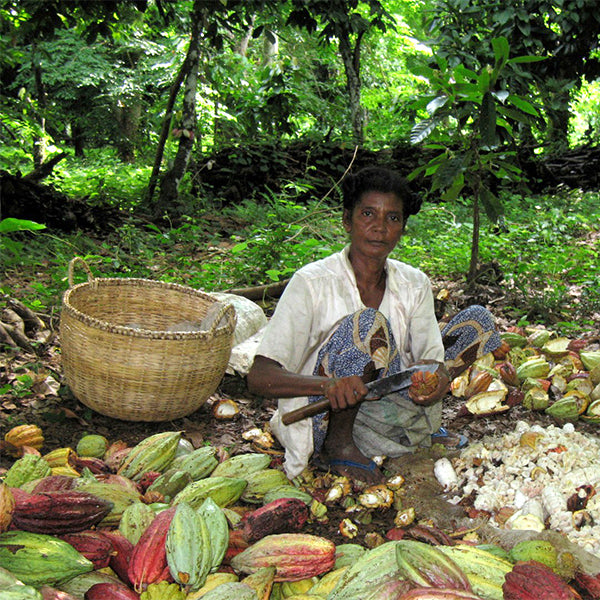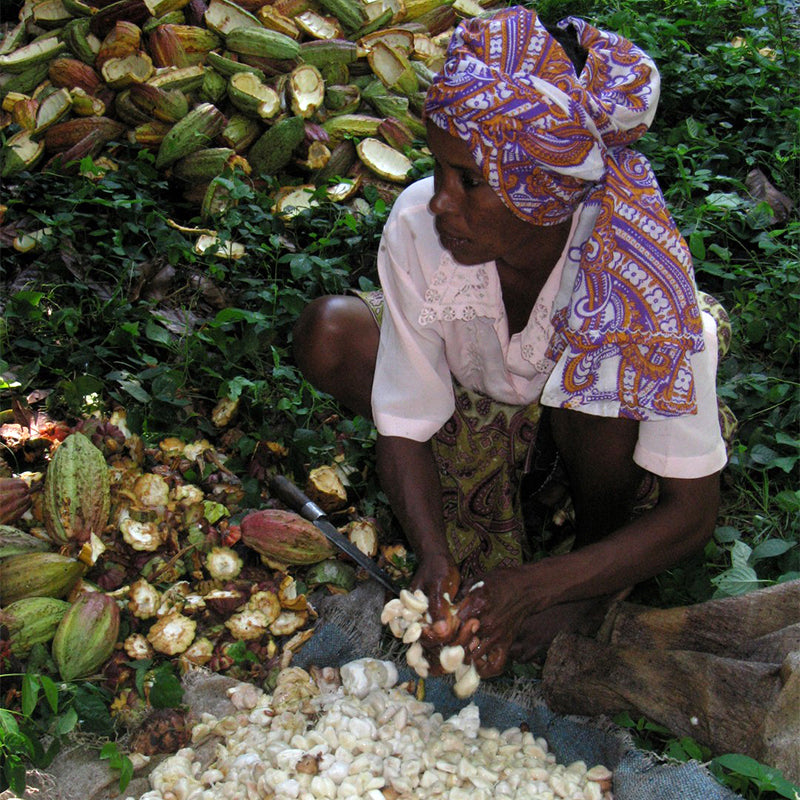The Cacao tree (theobroma) is found in tropical countries within 20 degrees latitude of the equator. It produces cacao pods which grow straight off the trunk of the tree, and in each pod is approximately 30—40 beans surrounded by a sweet white pulp. The trees can grow very tall so within plantations they are often shortened to around 20ft to allow easier harvest.
About Cacao



Cacao trees like shade and are typically grown amongst taller coconut palms or banana plants, they like a bit of elevation where it is slightly cooler so many plantations are situated on foothills of mountains or in areas of approx 400m elevation the warm tropical air cools and becomes increasingly humid and we

Cacao trees are unique in that their flowers have no scent, which means they cannot attract bees the way typical flowering plants do, instead the cacao tree must rely on midges and other insects to pollinate for her, and for this reason insecticides are usually not used. Harvest happens twice a year but in some areas the pods can be continually harvested all year. The pods are harvested when they have turned a certain color (depending on the variety) by carefully cutting the stem which attaches the pods to the tree, long poles with very sharp cutting hooks are used when the pods are out of reach, the pods fall to the ground and are collected. Special care is given not to damage the nodes where the pods have grown from because if damaged, no further pods will grow.

Once the pods are collected the beans are removed by lightly chopping into the pod with a machete, the pod halves are separated and the stem with the beans attached by a white pulp are removed. The stem is discarded and the beans retained.

The pod husks and stems make excellent compost for the plantation so nothing is wasted, the husks are either thrown back at the base of the tree and allowed to compost (thus attracting midges, bugs and flies to aid pollination) or collected elsewhere to create a huge compost pile.

The beans are collected and brought to the fermenting station where they are put into wooden bins, typically a ton of beans in each bin. The bins are arranged over many levels which allows one bin to be tipped into the other in a cascading fashion. Natural fermentation occurs by environmental yeasts reacting with the sugary pulp surronding the beans, and the mass of beans starts to heat up, killing the germination of the beans and developing the precursors to chocolate flavour.

After a week of fermentation the beans have burned up all the sugary white pulp and are ready for sun drying. The beans are spread out in the sun, either on concrete or on mats to dry for a further week, ideally achieving a moisture content of around 8%. Once dry they are collected and bagged in jute sacks ready for export.

The beans are now known as cocoa beans. Once they reach our factory we turn them into glorious chocolate! Please see our process.
